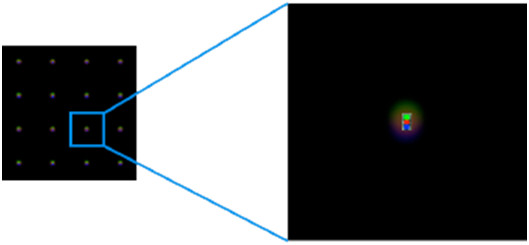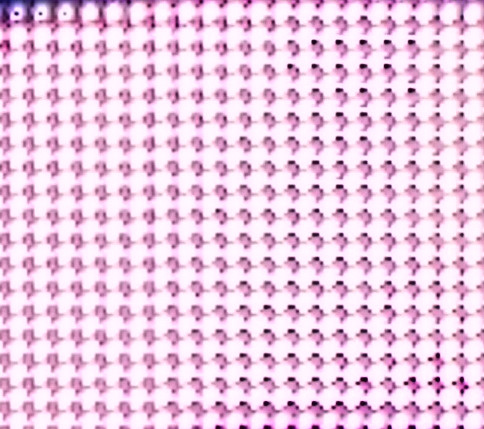I can’t really crown Sony’s CLEDIS display my best of show winner, as I have only been here one day and have not seen all the cool stuff yet – but this one will be hard to top. It truly is a new display category, as it is the first commercial product using a new class of LEDs: microLEDs (although Sony doesn’t like that word – TA).

The display (Sony Returns to Crystal LED With CLEDIS – subscription required) was officially unveiled in a press conference on the opening morning of InfoComm. Image quality is stunning. It is a tiled solution much like conventional LED modules, but there were only very slightly visible seams between modules. On display was a 32’x9’ (9.75m x 2.74m) system with a resolution of 8Kx2K.
I think this is a new class of LED video wall, because the packaging of the LEDs is completely different from conventional LED video wall modules. The Canvas display is composed of Sony’s CLEDIS (Crystal LED Integrated Structure) technology. The pixel pitch is stated as 1.2mm. On a conventional 1.2mm-pitch LED video wall module, the RGB LED device will take up a fair degree of this real estate, perhaps 50-70% of the pixel area. With Canvas, the emitting area is only 1% of the pixel area! That’s right, 99% of the module is black, making for really high contrast potential, especially in well-lit environments.
One might think that having a pixel with only 1% emitting area might create a display with points of light, or a highly pixellated image. It does not appear this way at all; the CLEDIS display is quite smooth and continuous. If you get to about 2 feet away you can now see some structure in the pixels, especially on white content, but you don’t see a point of light surrounded by black.
The photo on the left below is from the Sony web site, showing the LED surrounded by black. The photo on the right is a section of white content that was displayed on the Canvas screen at InfoComm. This looks like most of the pixel area is white with some sort of structure in the corners of the pixel. That leads me to suspect that Sony has an optical layer on top of each module that is expanding the light from this tiny LED to fill the full pixel area. It could be a microlens array or diffuser, for example. This is all pure speculation on my part, mind you, but the result is a smooth continuous image with great contrast.


And there is more. Each module is 403 x 453 mm with a resolution of 320 x 360 x RGB. Peak luminance is around 1000 cd/m² and the display will support HDR (presumably HDR10) in future releases. The viewing angle is about 180° and contrast is 1M:1, although it is unclear exactly how this was measured. The color gamut is 140% of the Rec. 709 gamut. And it can operate at 120 fps!
Sony is also offering a full control system. Each controller can manage up to 72 modules with a maximum input resolution of 3840×2160. But 20 controllers can be chained together to create massive video walls.
In back of the 8Kx2K Canvas display, Sony showed the controller architecture. This consisted of a media server and an image generator, each with two HDMI outputs. These are fed to two HDMI-to-IP conversion modules, which send the signals over fiber optics to an IP switch, which appeared to be an off-the shelf 10 Gbps device. At the display, the data is converted from an IP format to a DVI format and sent to two display controllers, which then drive signals to the Canvas display. We presume the signal is daisy chained between modules.
This is an indoor solution aimed at the same application where fine pitch LEDs compete now. Sony has not disclosed pricing but you can assume it will be expensive. There are many other details, like power consumption, that have not been revealed that we hope to learn more about over time.
What do all of you think about this display?
– Chris Chinnock

